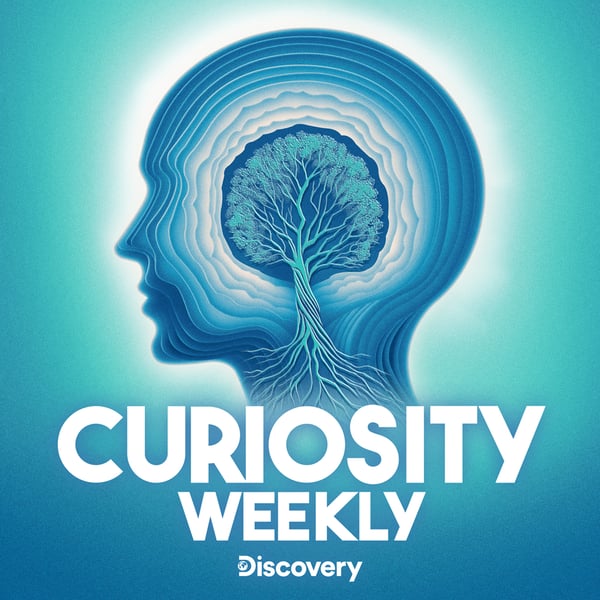NASA’s New Planet-Hunting Telescope, the Light Triad, and Where You Spend Your Time
Curiosity Weekly
Warner Bros. Discovery
4.6 • 935 Ratings
🗓️ 23 April 2019
⏱️ 10 minutes
🧾️ Download transcript
Summary
Learn about where NASA’s new planet-hunting telescope is looking for life first; the number of places where people spend most of their time; and, the new “Light Triad” of personality traits.
In this podcast, Cody Gough and Ashley Hamer discuss the following stories from Curiosity.com to help you get smarter and learn something new in just a few minutes:
- NASA Has a New Planet-Hunting Telescope, and It Knows Where to Look for Life First — https://curiosity.im/2GgnDkf
- Most People Spend Their Time in Just 25 Places — https://curiosity.im/2GgLhgF
- Put Your Best Qualities to the Test With the Light Triad Scale — https://curiosity.im/2GerY7t
If you love our show and you're interested in hearing full-length interviews, then please consider supporting us on Patreon. You'll get exclusive episodes and access to our archives as soon as you become a Patron! https://www.patreon.com/curiositydotcom
Download the FREE 5-star Curiosity app for Android and iOS at https://curiosity.im/podcast-app. And Amazon smart speaker users: you can listen to our podcast as part of your Amazon Alexa Flash Briefing — just click “enable” here: https://curiosity.im/podcast-flash-briefing.
Find episode transcript here: https://curiosity-daily-4e53644e.simplecast.com/episodes/nasas-new-planet-hunting-telescope-the-light-triad-and-where-you-spend-your-time
Hosted on Acast. See acast.com/privacy for more information.
Transcript
Click on a timestamp to play from that location
| 0:00.0 | Hi, we're here from Curiosity.com to help you get smarter in just a few minutes. |
| 0:05.3 | I'm Cody Gough. |
| 0:06.3 | And I'm Ashley Hamer. |
| 0:07.3 | Today you learn about where NASA's new Planet Hunting Telescope is looking for life first, the |
| 0:12.2 | number of places where people spend most of their time |
| 0:14.0 | and the new light triad of personality traits. |
| 0:18.0 | Let's satisfy some curiosity for the 312th time |
| 0:21.0 | because today is the one-year anniversary of the first episode of Curiosity Daily. |
| 0:27.0 | Whooo! |
| 0:28.0 | More on that at the end of today's episode. |
| 0:30.0 | NASA's Planet Hunting Telescope just got a few pointers on where to look for life first. |
| 0:35.1 | I'm talking about the transiting exoplanets survey satellite, or Tess. |
| 0:39.5 | And researchers just came out with a list of more than 1,800 stars that could host habitable planets. |
| 0:45.0 | Habitable! Stars that we might want to check out with Tess's help. |
| 0:49.0 | When astronomers say a planet is habitable, by the way, they mean it's a rocky world that orbits near its |
| 0:54.9 | parent star in a region where liquid water could exist on the planet. If the planet |
| 0:59.1 | is too close to the star like mercury then that water evaporates. If it's too far, then the water turns to ice. |
| 1:05.6 | Test launched about a year ago to search out habitable exoplanets, meaning planets outside our solar |
| 1:11.1 | system that are close to Earth. A team of astronomers led by |
| 1:14.4 | Cornell University astronomy professor Lisa Kultnager just published a Tess |
| 1:18.9 | Habitable Zone Star Catalog that identifies those 1800-plus stars that could host Habitable World. catalog that Even better than that, about 10% of the stars on that full list are within the viewing |
| 1:34.4 | range of the James Webb Space Telescope. |
... |
Please login to see the full transcript.
Disclaimer: The podcast and artwork embedded on this page are from Warner Bros. Discovery, and are the property of its owner and not affiliated with or endorsed by Tapesearch.
Generated transcripts are the property of Warner Bros. Discovery and are distributed freely under the Fair Use doctrine. Transcripts generated by Tapesearch are not guaranteed to be accurate.
Copyright © Tapesearch 2025.

